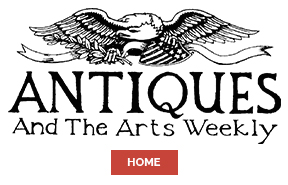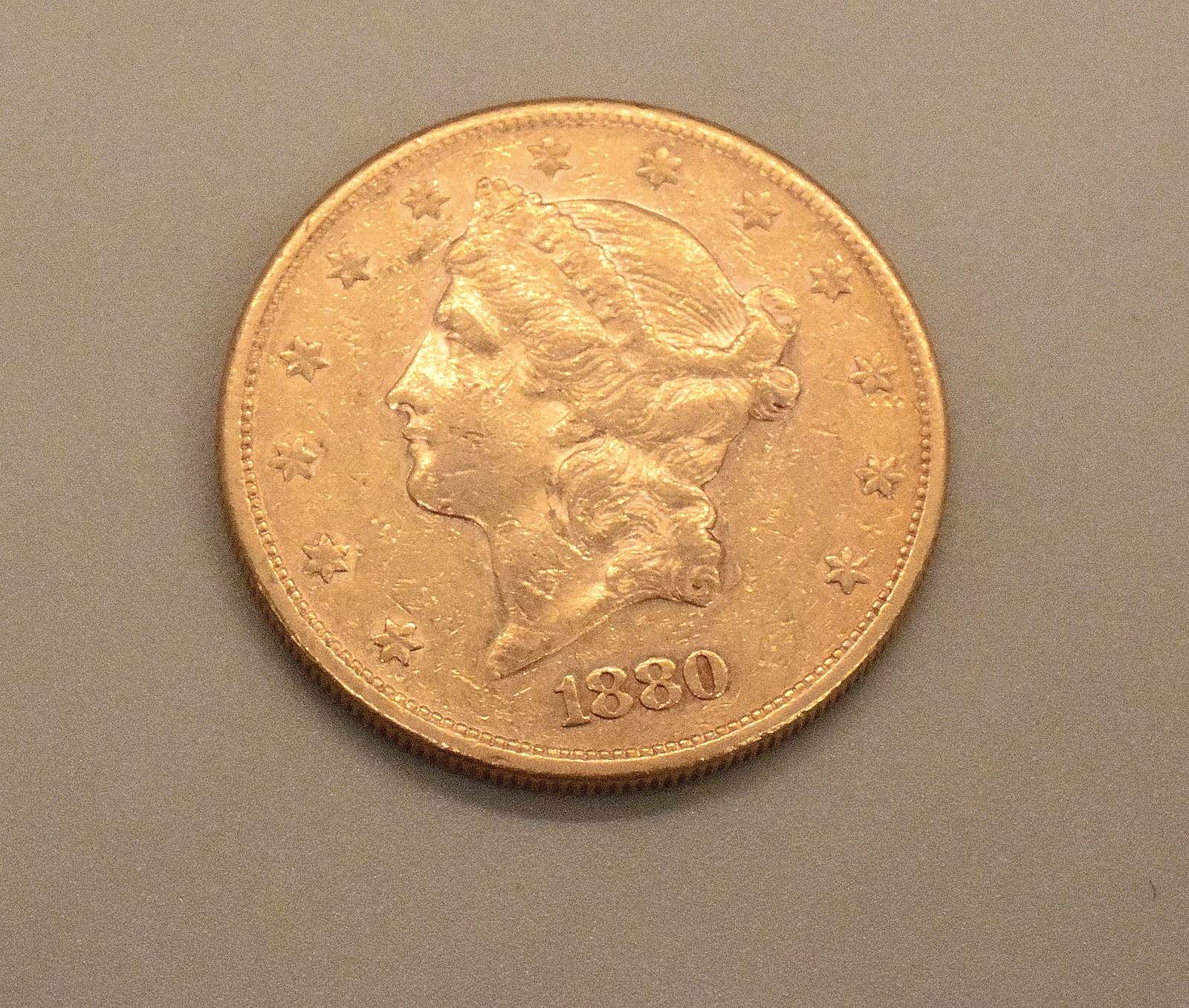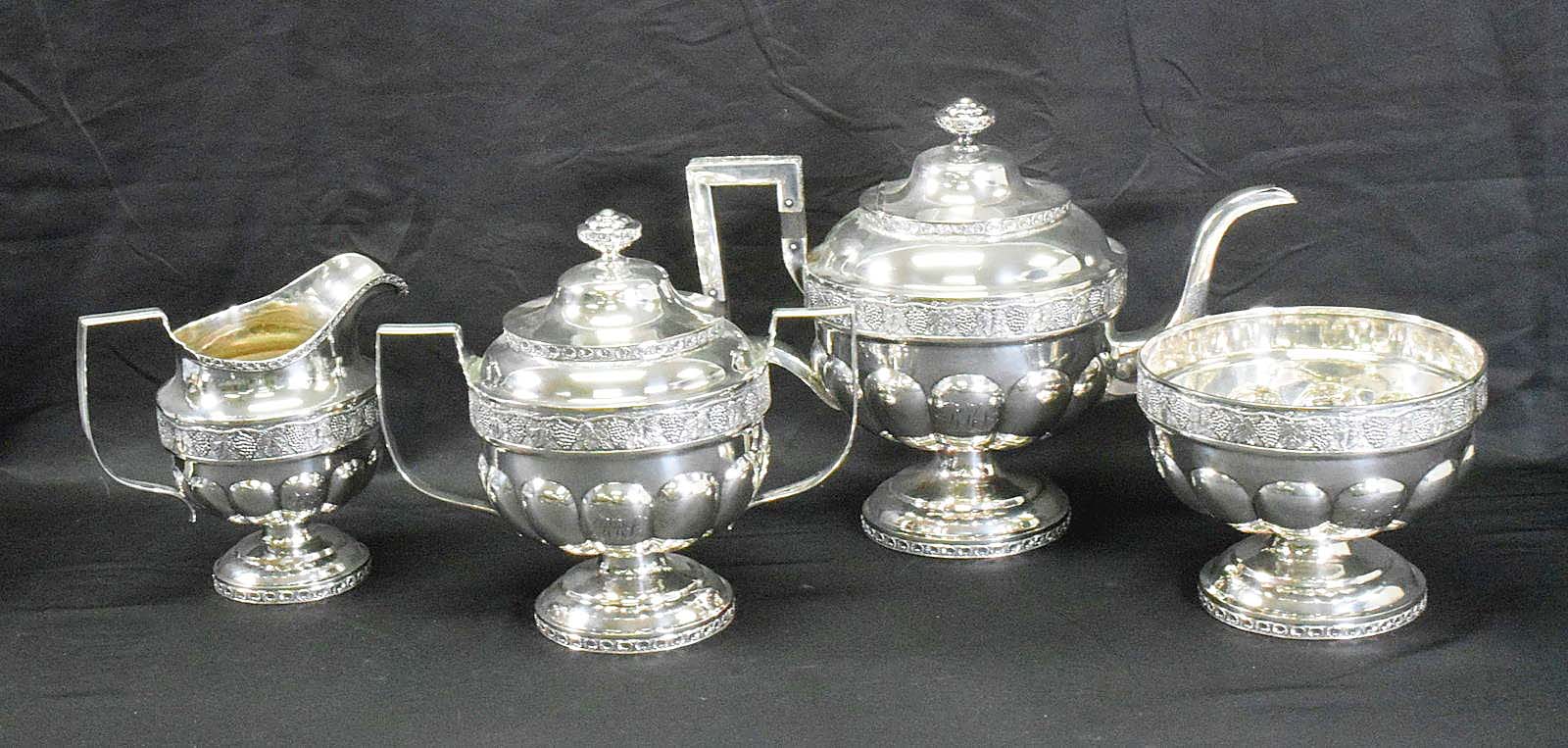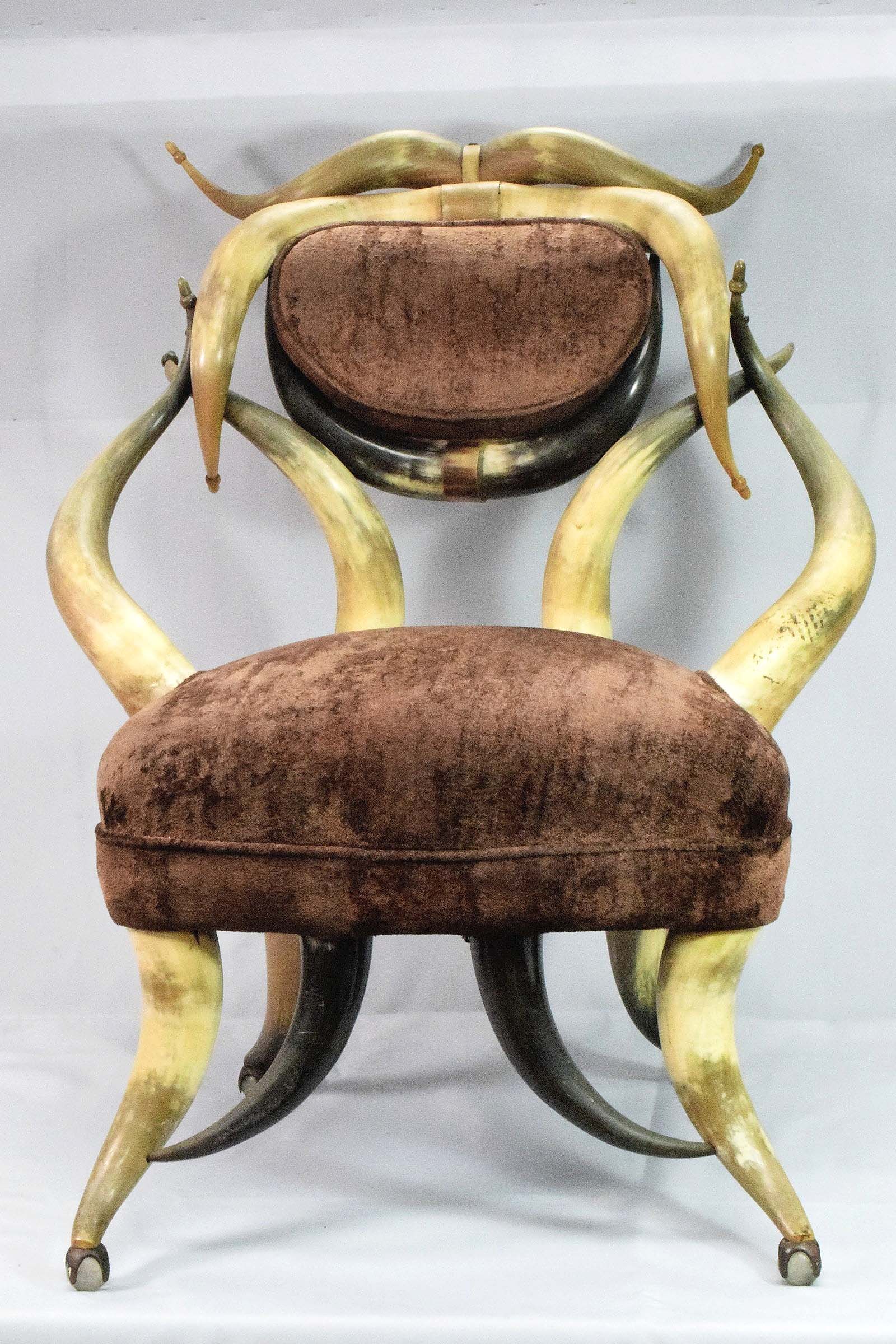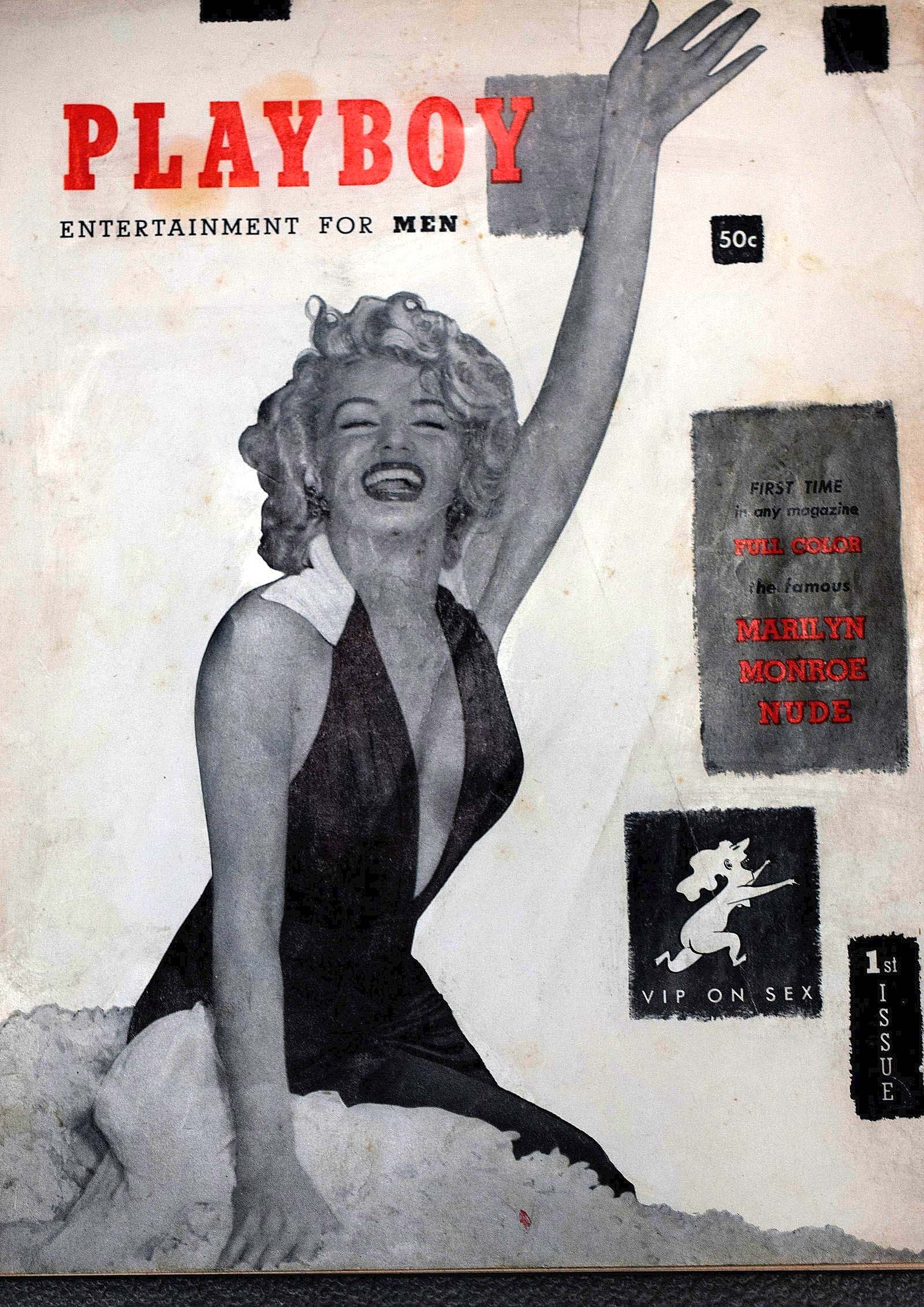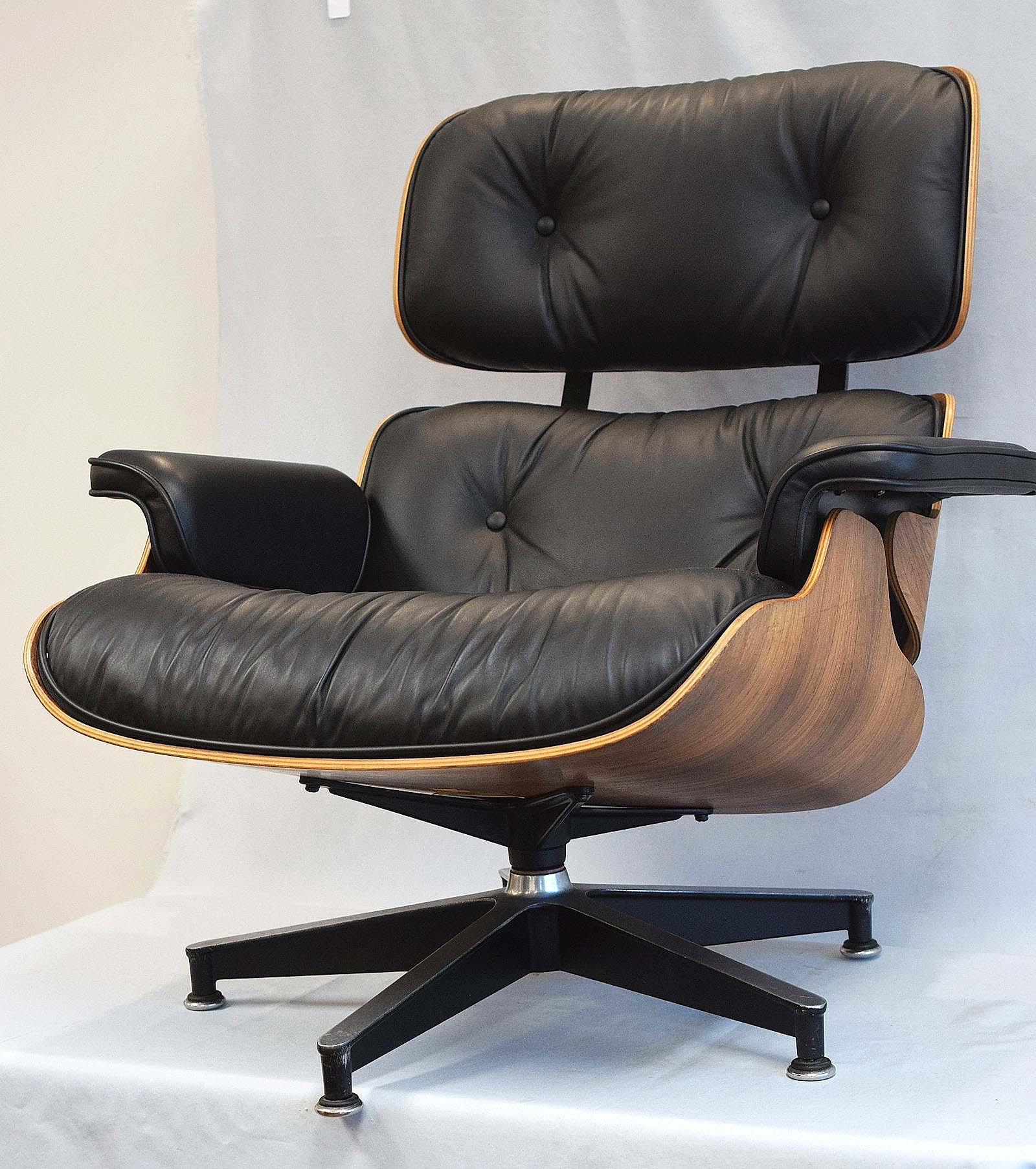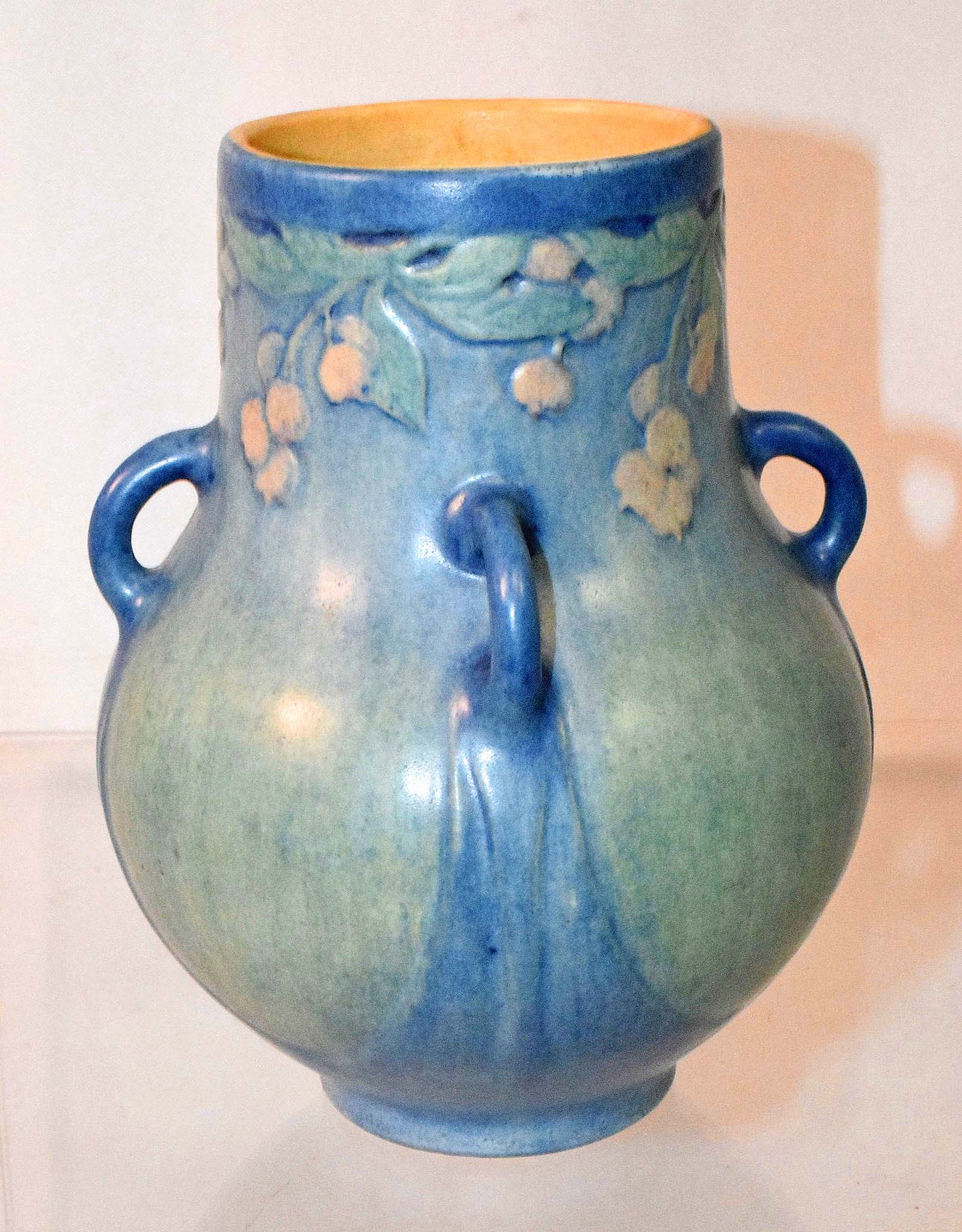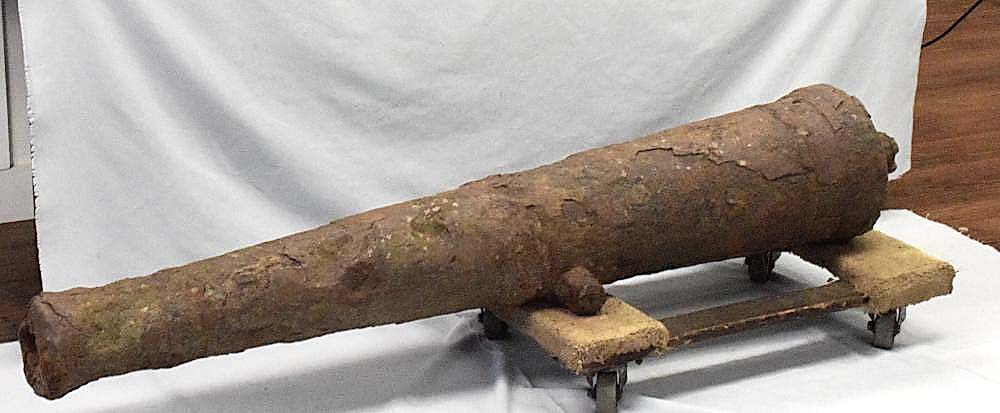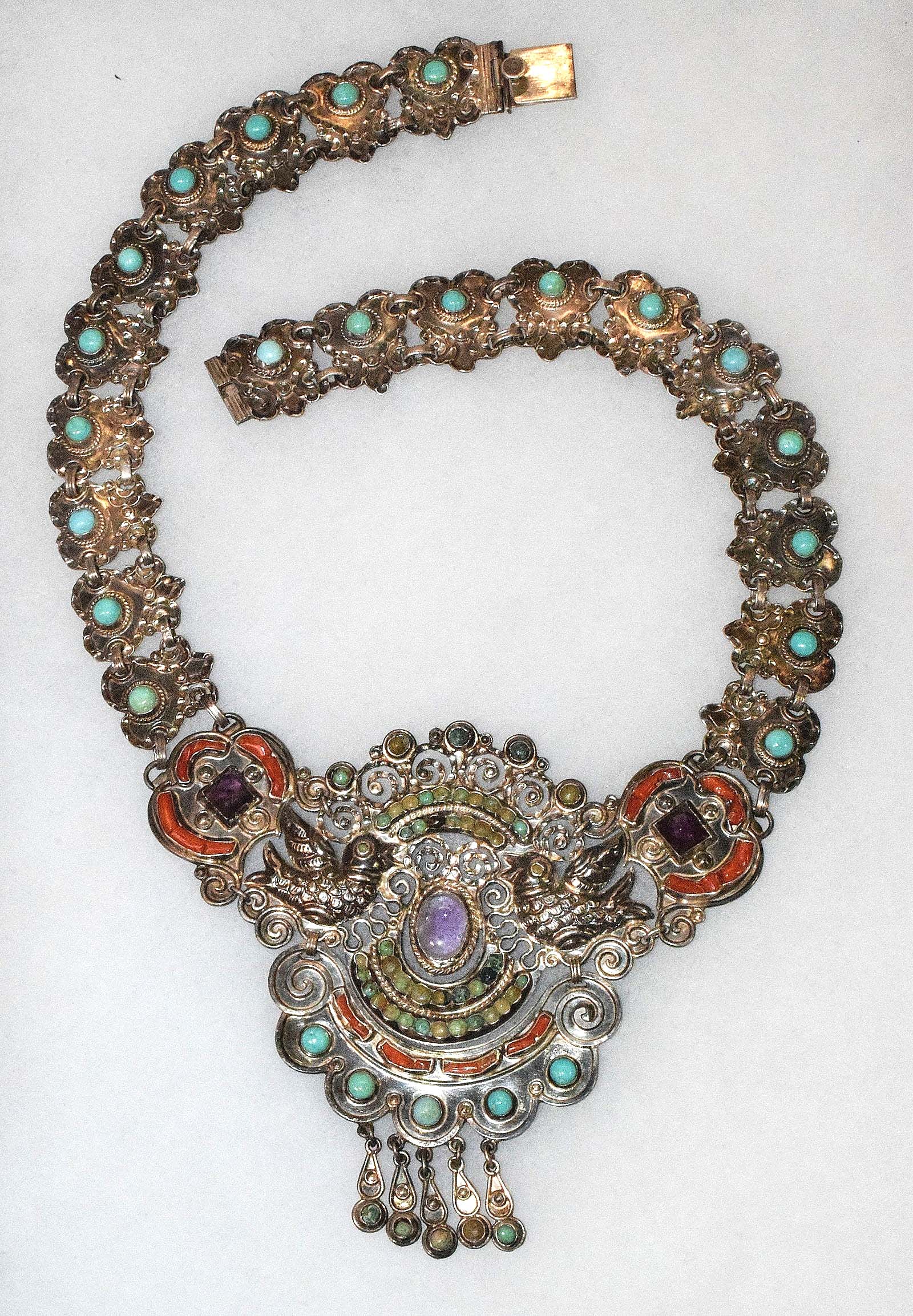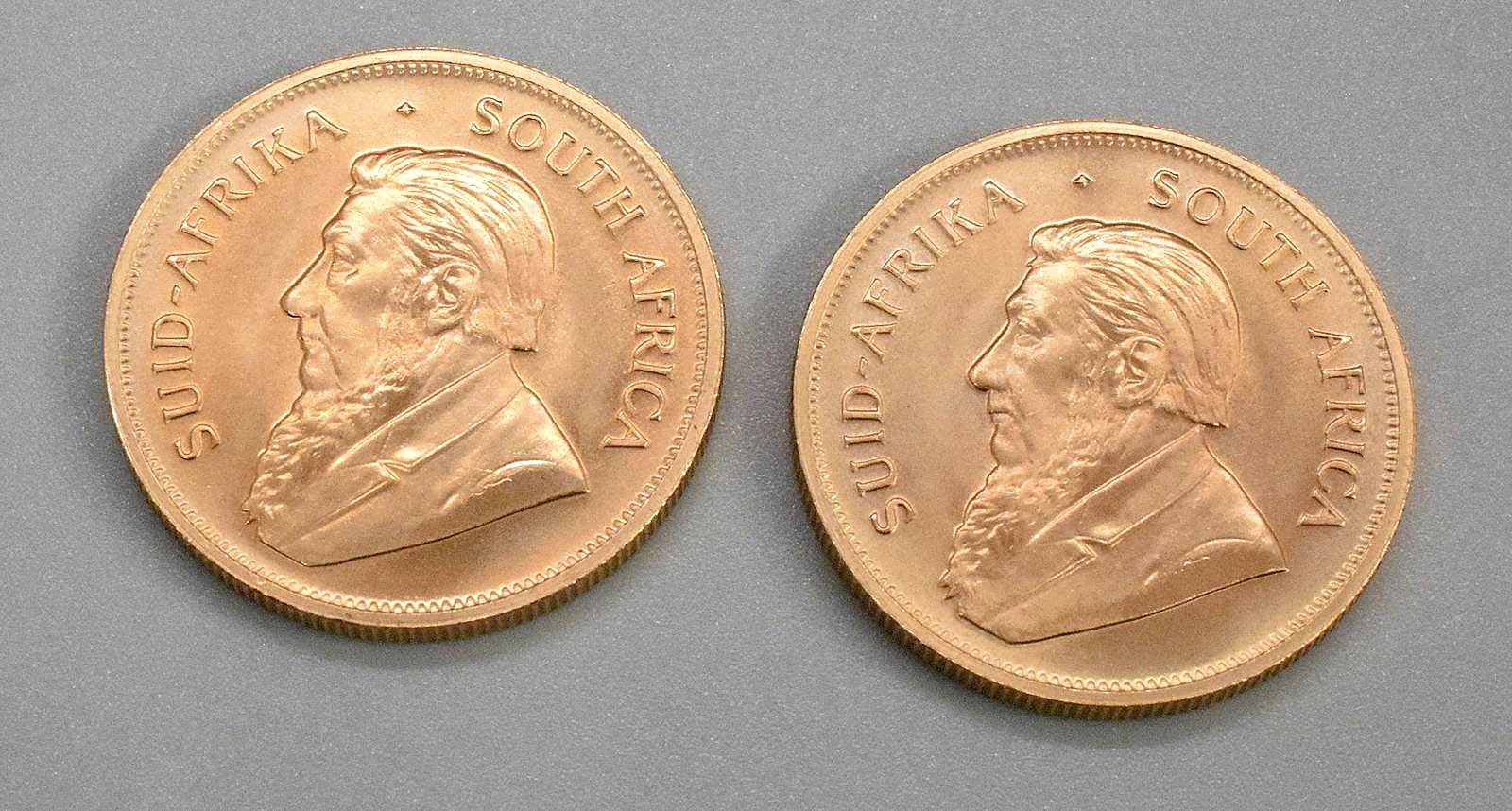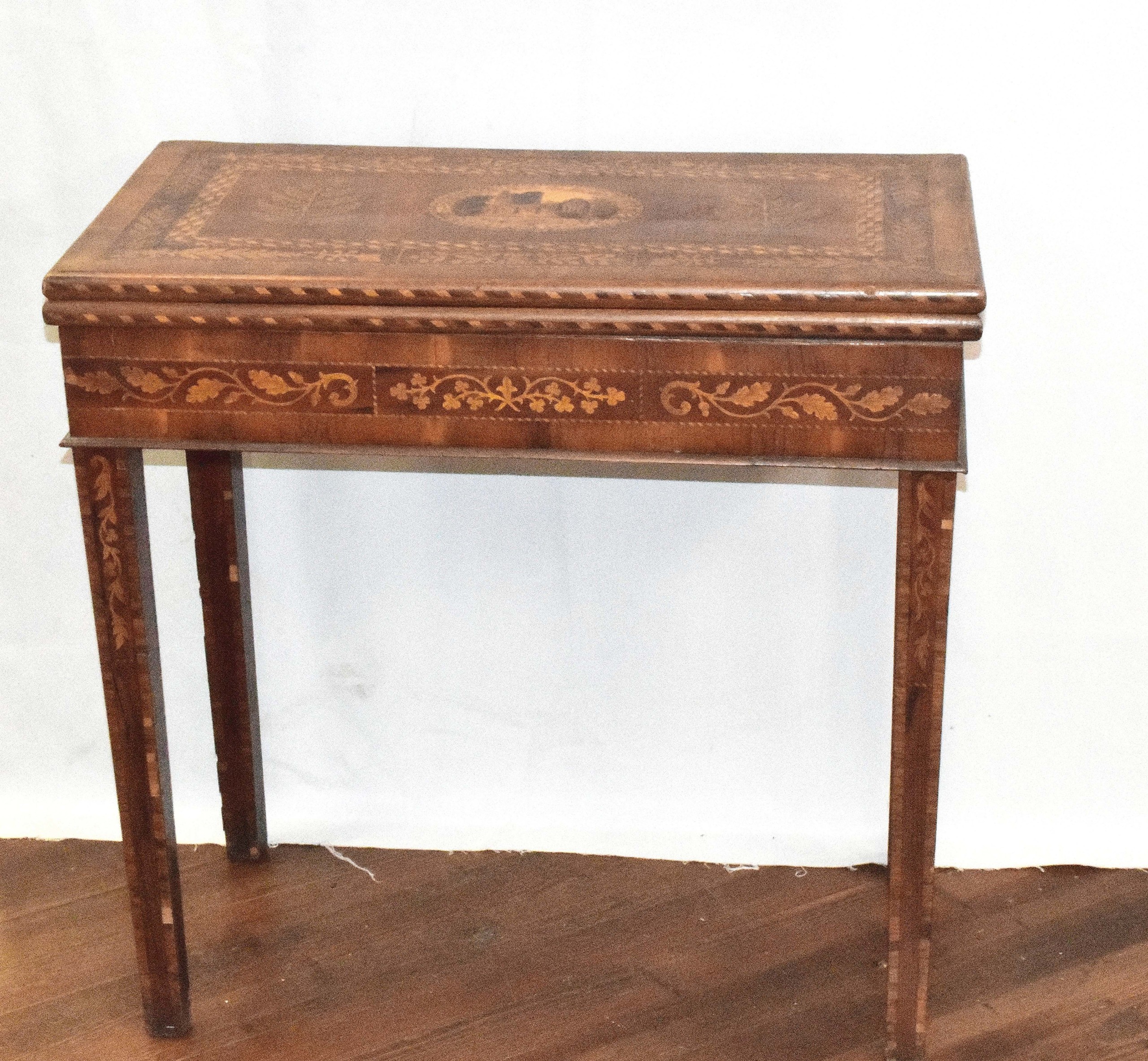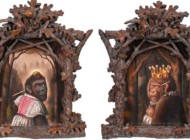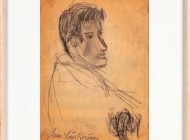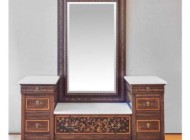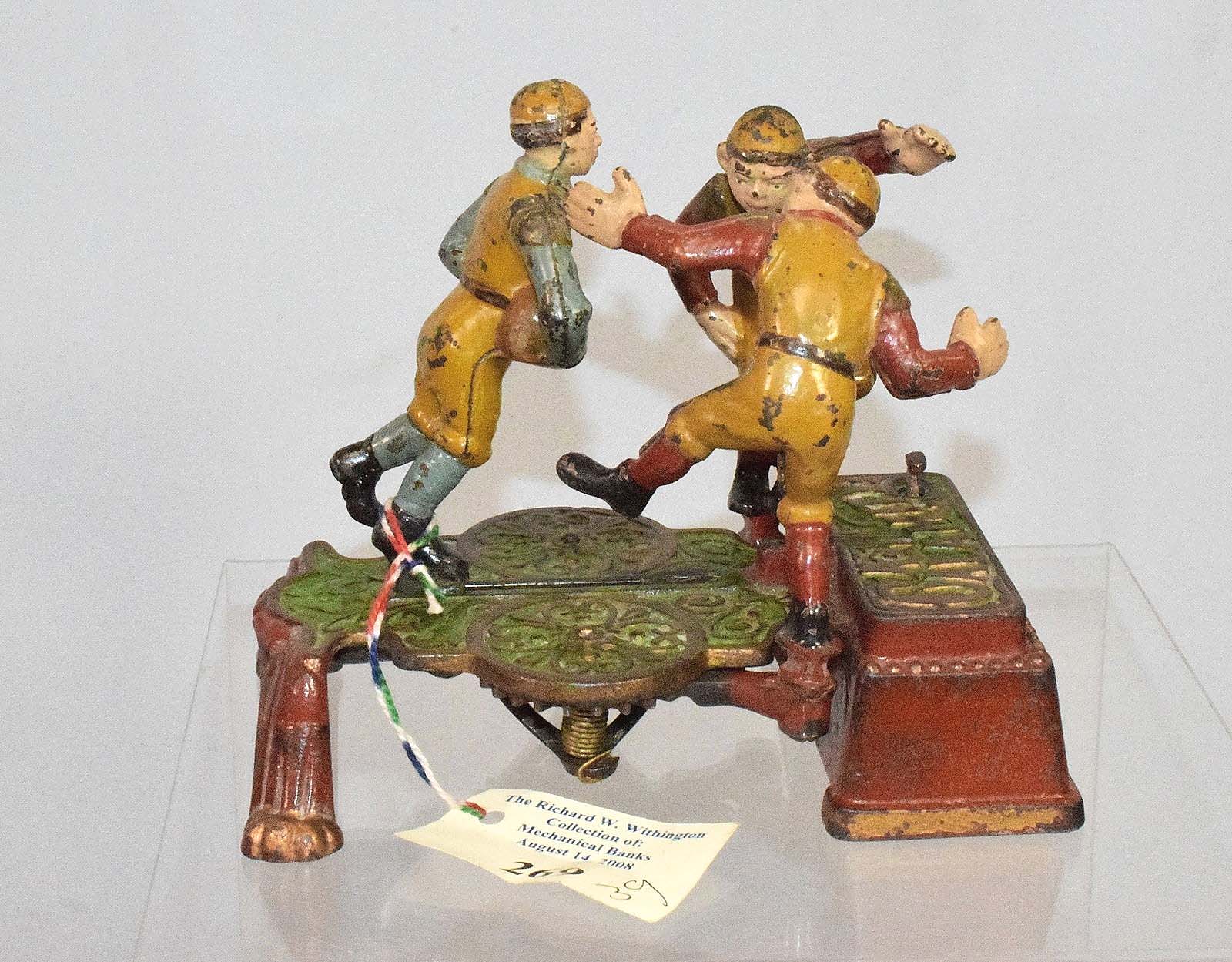
From the Dick Withington collection, this Calamity Football bank was in fine condition and included the tag from the 2008 sale of the Withington collection. It was the highest-priced item in the sale, reaching $7,930 ($7/9,000).
Review by Rick Russack
MIDDLEBOROUGH, MASS. — The slogan that John White and his wife, Kathryn Black, use in promoting White’s Auctions is “As Simple As Black And White.” That’s appropriate and they keep it as simple for both buyers and sellers as they can. The April 27 auction, in their recently remodeled gallery, was fast-paced and grossed $462,000. If you wanted to bid, you’d better not hesitate. If the auction does not receive an opening bid on a lot quickly, the item is passed. There were about 75 bidders in the gallery and they were active, taking home a fair percentage of the lots. The merchandise was well researched and well described in the online and printed catalog available at the sale.
Seven paintings by socially prominent American painter and journalist Francis Davis Millet (1848-1912), who drowned on the Titanic, were included in the sale. As the ship went down, Millet, a first-class passenger, was reportedly observed along with John Jacob Astor IV helping women and children into lifeboats. The paintings had come from the nearby estate of Peter Engstrom, who wrote a biography of the artist, lived in his studio and collected his works.
Topping the selection was Millet’s portrait of a Native American, which realized $6,100. One of his early works, painted on what may have been a cupboard door, of two Natives hunting, earned $4,270. Although not confirmed in the catalog, the painting appeared to show the Natural Bridge in Virginia, a site once owned by Thomas Jefferson.
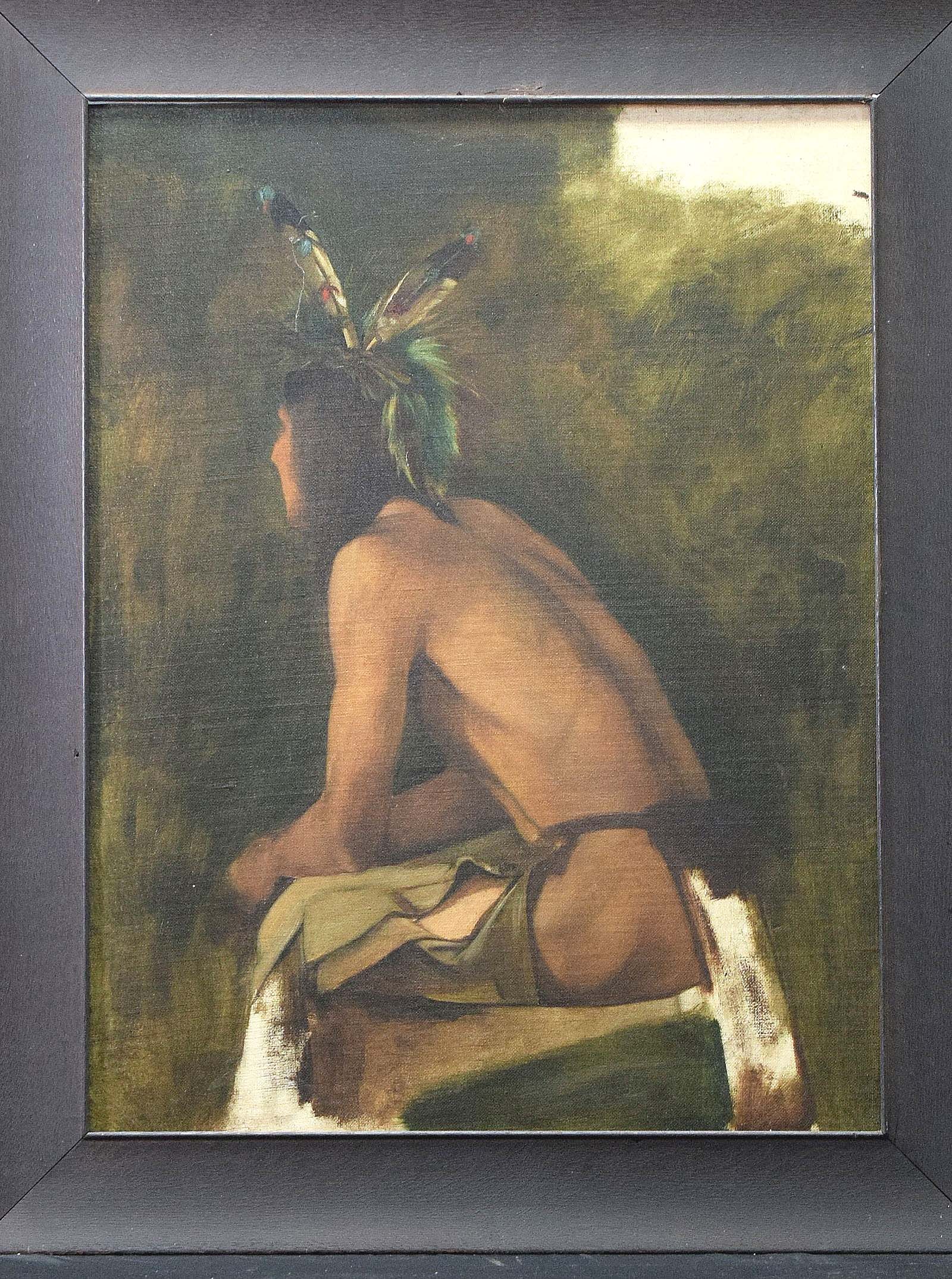
Seven of Francis Davis Millet’s works, from the collection of his biographer, were included in this sale. His portrait of a Native American brought the highest price of the group, $6,100 ($2/3,000).
White’s sales usually include a strong selection of gold and other coins as well as jewelry. Ten one-ounce gold Krugerrands were sold in five lots, and each brought the same amount: $6,710. Four lots of 1994 American gold eagle sets of four coins each sold for $6,100. There were several other lots of gold coins of varying denominations. A plentiful selection of jewelry was topped by two silver squash blossom necklaces. One, a silver basket necklace with double strand links, was designed by Matilde Matl signed “Matl,” included coral, amethyst and turquoise; it brought $4,880. Gold jewelry included a fusee movement 18K pocket watch by M.J. Tobias of Liverpool; it brought $4,270. As White was selling at the podium, he withdrew one piece, saying that they had determined that the piece was gold-plated, not solid gold.
The selection of mechanical banks included a Calamity Football example, which realized $7,930, the sale’s highest price. It was one of the banks made by the J.E. Stevens Company, circa 1875. The bank retained original paint and had been in the collection of storied collector/auctioneer Richard “Dick” Whithington; it had previously sold at Withington’s August 14, 2008, auction. Whithington had the first New Hampshire auctioneer’s license, and his bank collection was always on display at the local bank. The Calamity Football bank also retained its 2008 auction tag and White advised bidders to keep that tag with the bank. Of the remaining nine banks in the sale was an original 1885 Shepard Hardware Company Trick Pony, which brought $1,464.
There were numerous other interesting items in the sale. A group of Native American items included two woven rugs which had been consigned by the family of a man who had been a teacher at the Turtle Mountain Indian Reservation in North Dakota. The larger of the two, 67- inches long, depicting a single warrior, earned $2,684. There were also two battle roach headdresses made of porcupine hair. One earned $366 while the other brought a little bit less.
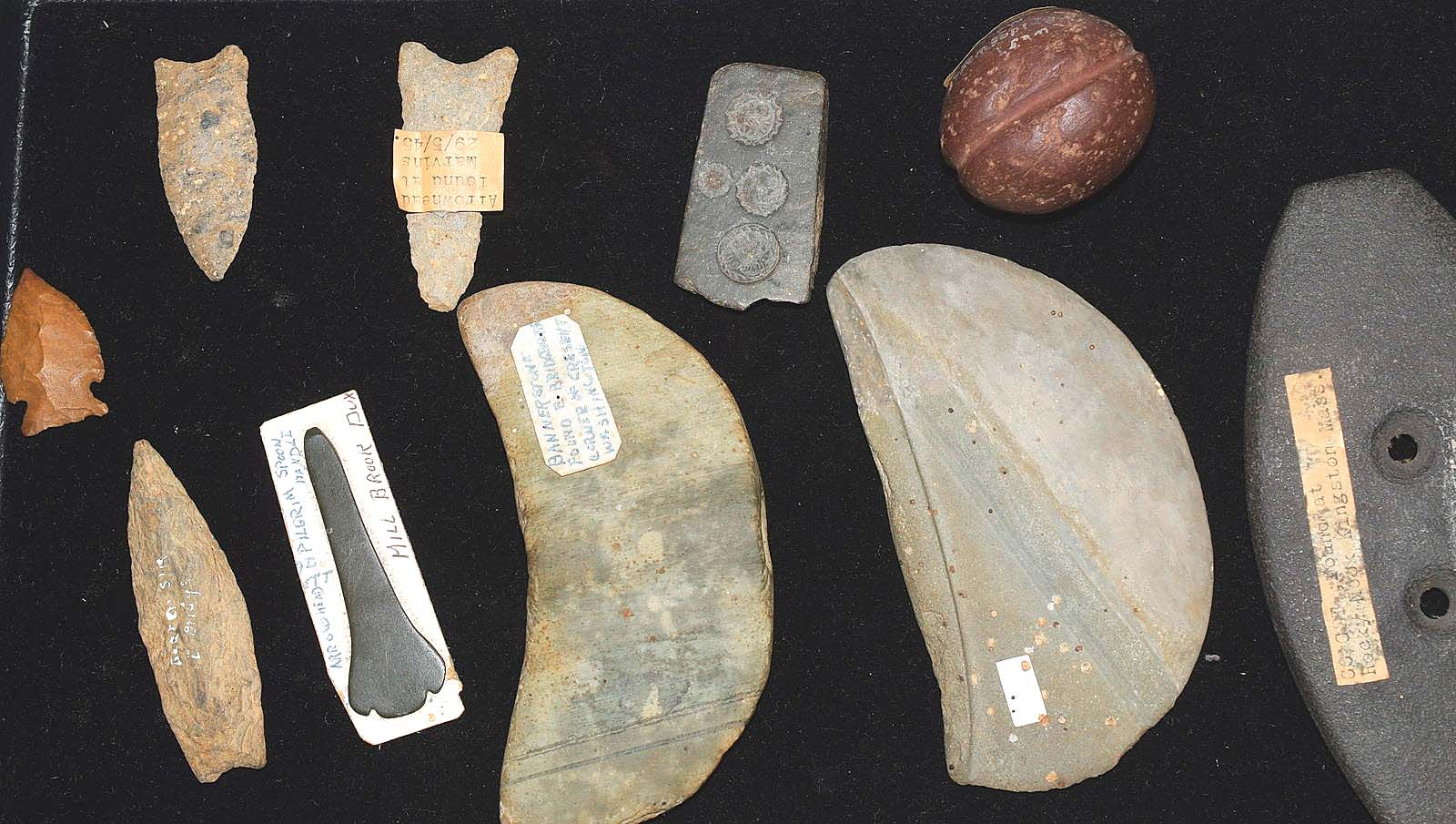
Peter Engstrom, the collector of the Millet paintings, was an amateur archeologist who collected early Native American artifacts. Most of the stone objects in this lot were identified as to where they had been recovered. This lot of nine objects realized $5,185 ($500-$1,000).
Five guitars included a Gibson B-25 Sunburst acoustic guitar and case, which realized $2,196. A small group of dolls included an E.J. Jumeau closed-mouth bisque doll that found a new home for $2,196. A Civil War Navy .44-caliber Colt revolver with an engraved naval scene on the cylinder closed at $2,196.
Every now and then, for no apparent reason, a great object does not sell, even with a reasonable starting bid. Such was the case with an elaborate Black Forest wall clock. It measured more than 4-feet tall and was carved with a large stag with antlers in the crest, two hanging long guns, a large hare, a large pheasant and a hunting horn. White was unable to get a bid at the opening price of $1,000, so it was passed.
It may not have been the most attractive object in the sale but its place in American history made up for that. We’re talking about a heavily-rusted 400-pound British cannon measuring more than 5 feet long, an artifact dating to Evacuation Day, March 17, 1776. According to John White, a few days earlier than that, General George Washington mounted about 60 cannons on Dorchester Heights, overlooking Boston. They had been hauled from Fort Ticonderoga. Unknown to the British, there was little — if any — ammunition for the canons. The British commander, General Howe, believing his forces and loyal Bostonians in danger, decided not to fight and ordered his army, 11,000 strong, to evacuate and move to Nova Scotia, Canada, leaving behind much of their equipment and artillery. The British cannons were dumped into Boston Harbor but were dredged up later and used as fill in the Quincy quarries, where some were rescued many years later. Evacuation Day is still a holiday in Boston, and this cannon sold to a collector for $3,416, a price that does not include shipping.
After the sale, both John and Kathryn expressed their satisfaction. “We had a good group of merchandise. The turnout in the gallery was strong-nice to see that coming back. The squash blossom necklaces were a pleasant surprise-both brought more than we expected. The trade signs also did well. And so did the Dick Withington bank.”
Prices quoted include the buyer’s premium as reported by the auction house.
For information, 508-269-9275 or www.whitesauctions.com.
